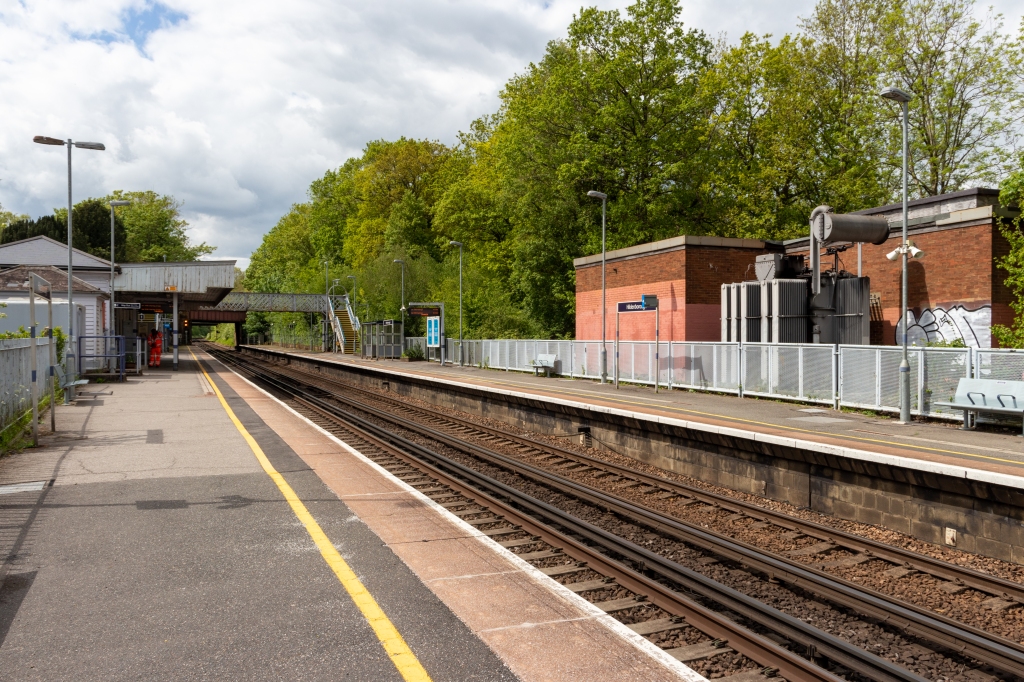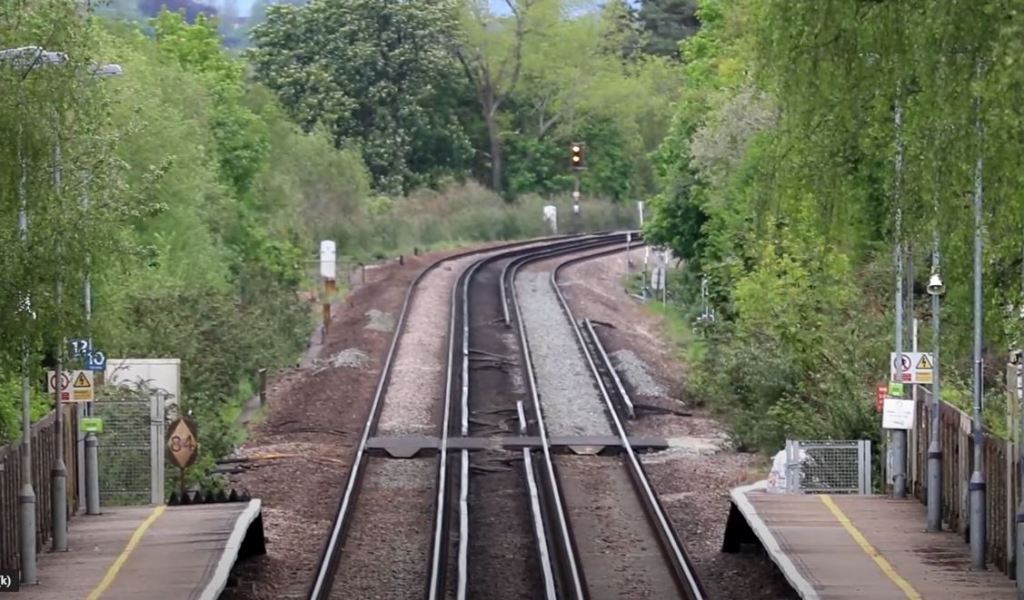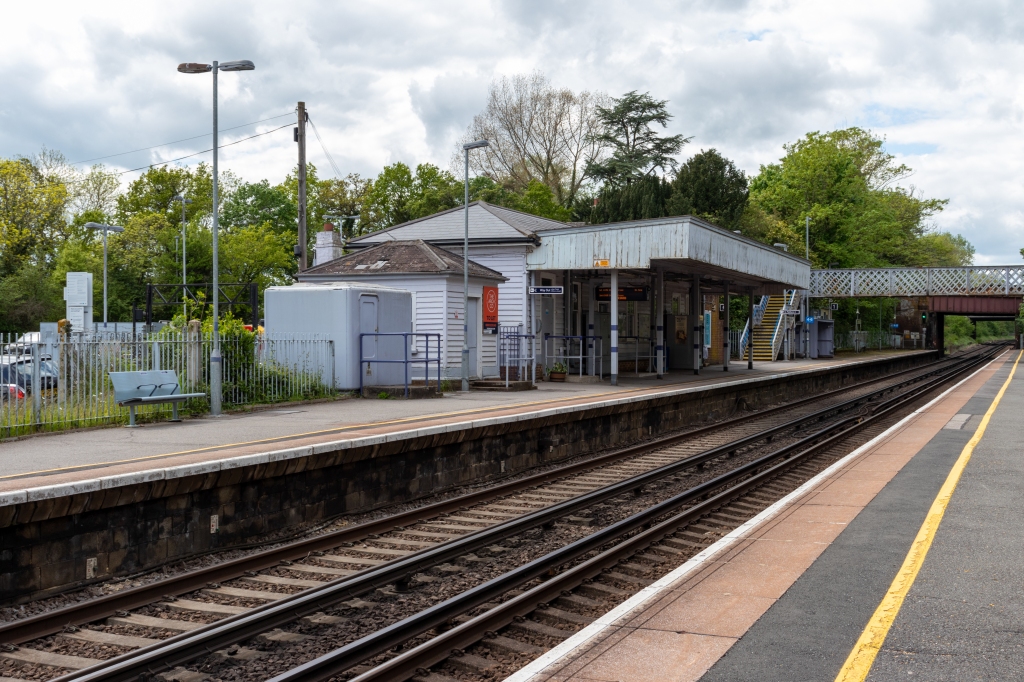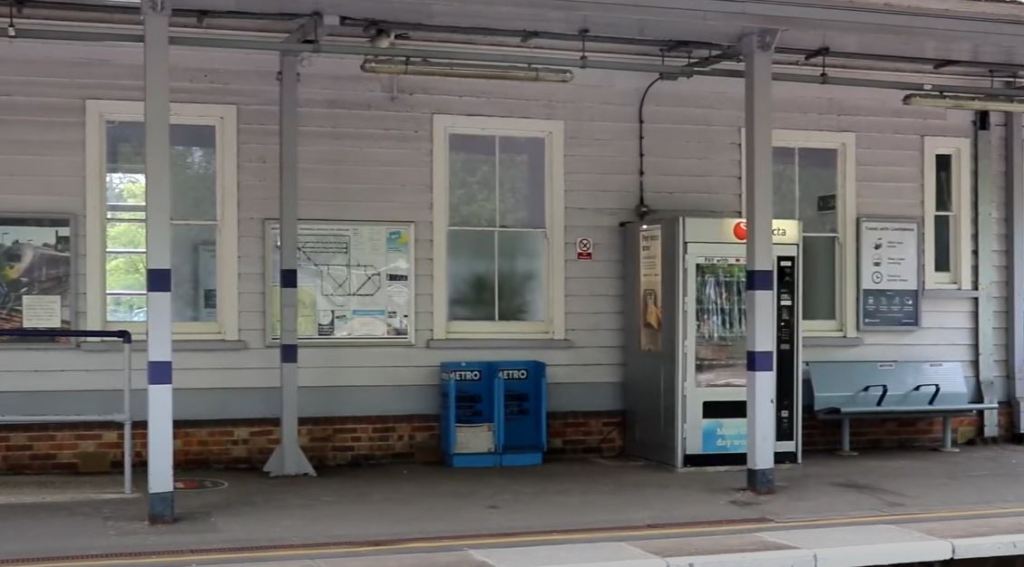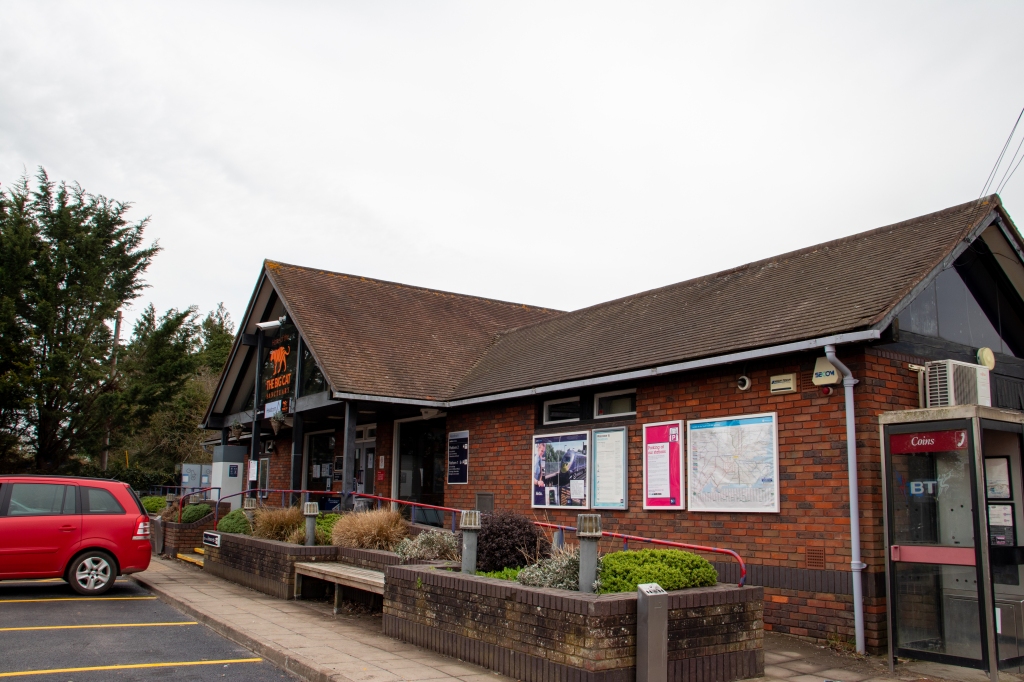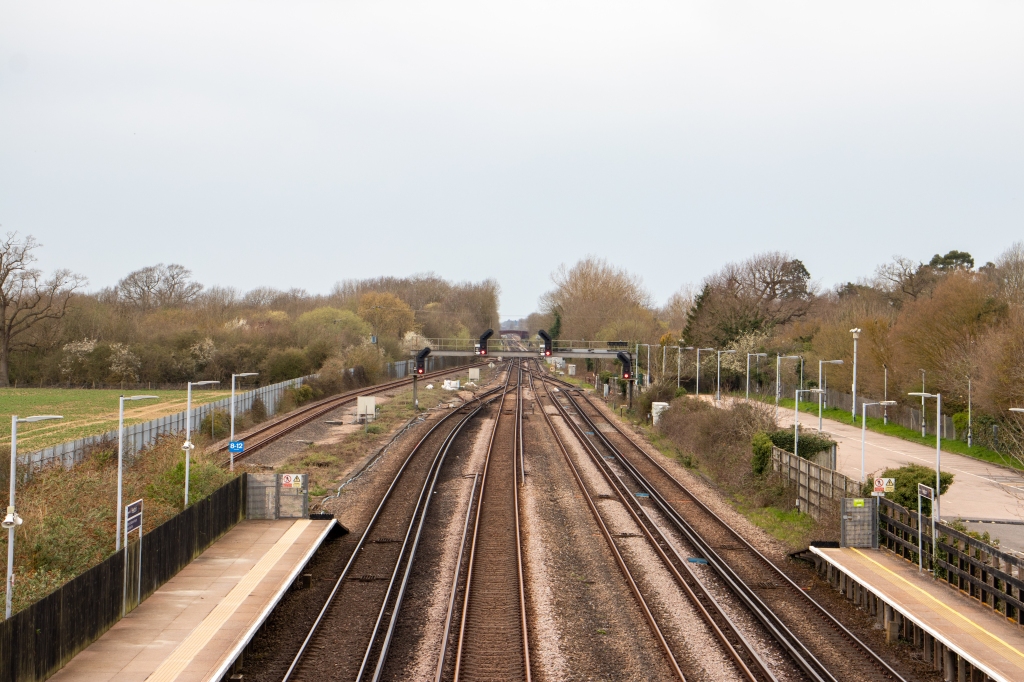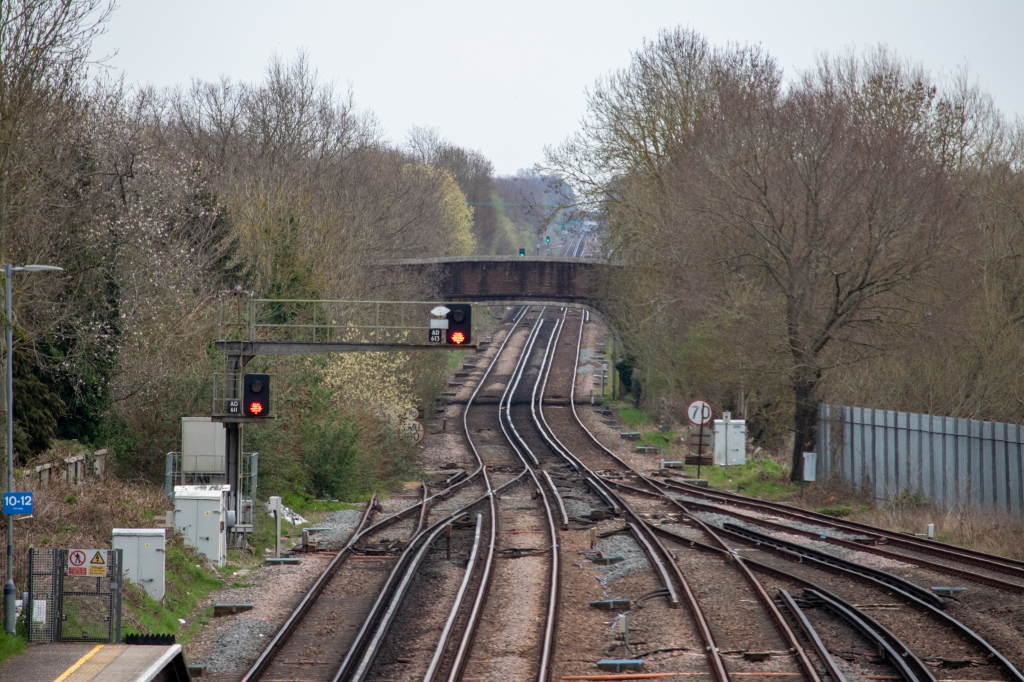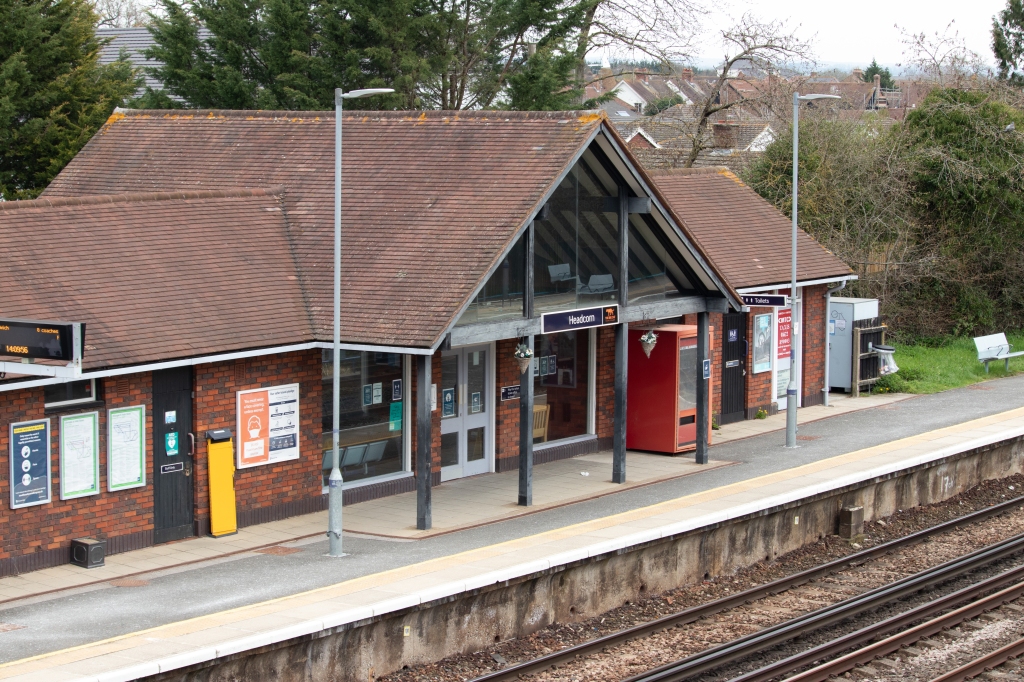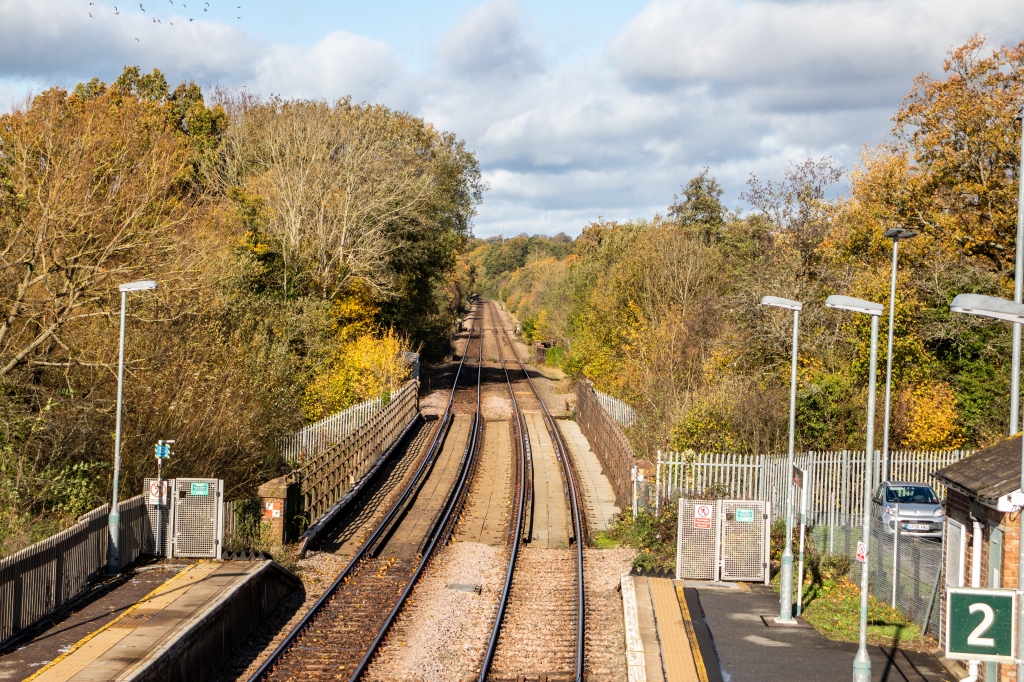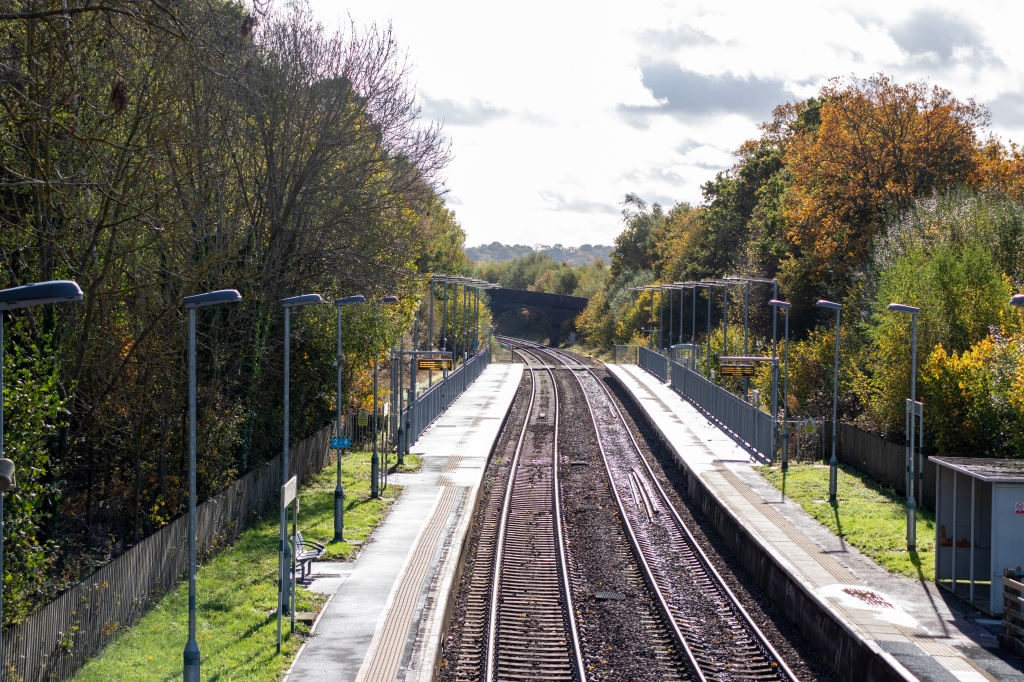( 2021 / 2022 entry and exit figures : 214 130 )
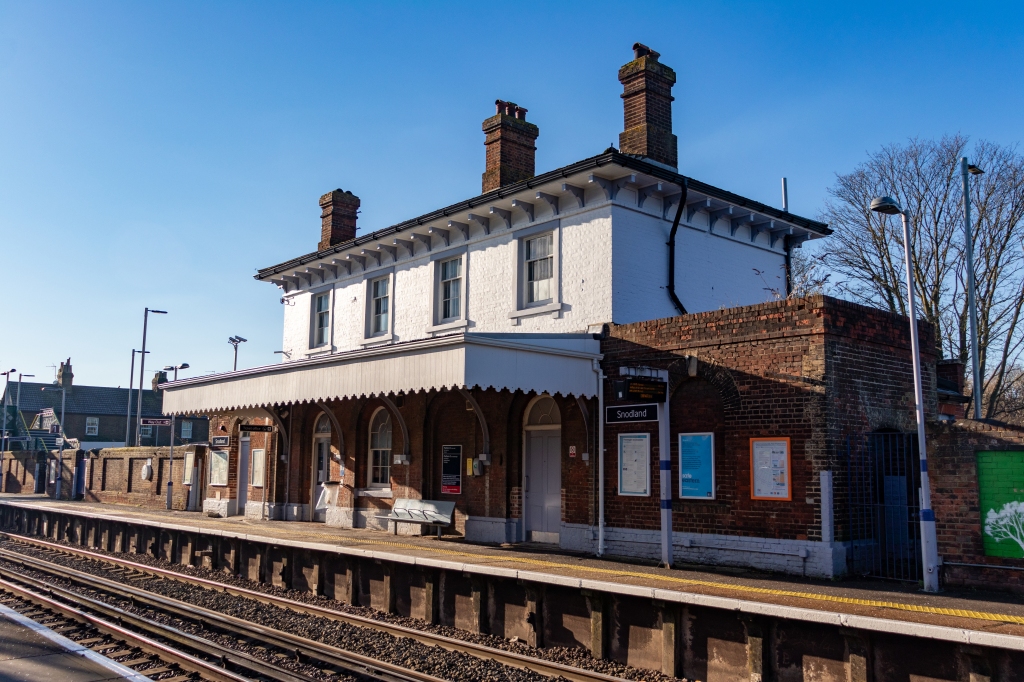
Opened in 1856 by the South East Railway, Snodland would be part of the extension of the line already in place between Paddock wood and Maidstone.
The Strood bound platform has a wall with canopy, which was unique to the South East railway network, as no other station had such a spectacular canopy over the down platforms. This was because it was attached to the large goods shed.
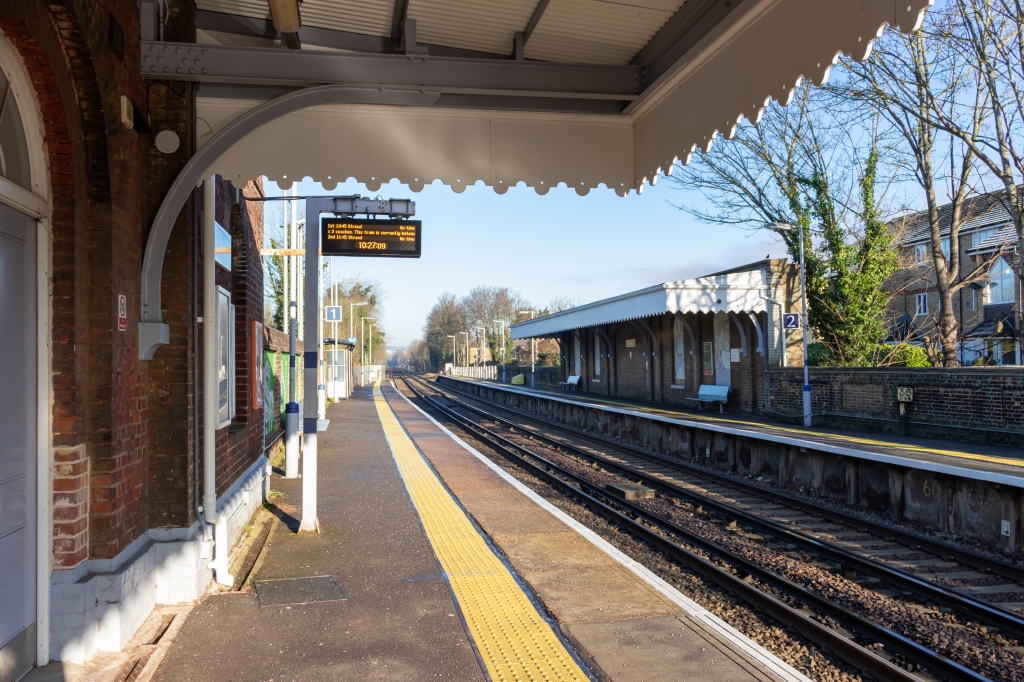
Snodland did not have a main station building from the outset, this being provided around 2 years after opening, and like most along the line was of a unique configuration. A two story brick built building, was more suited to a town station, but it certainly made a statement.
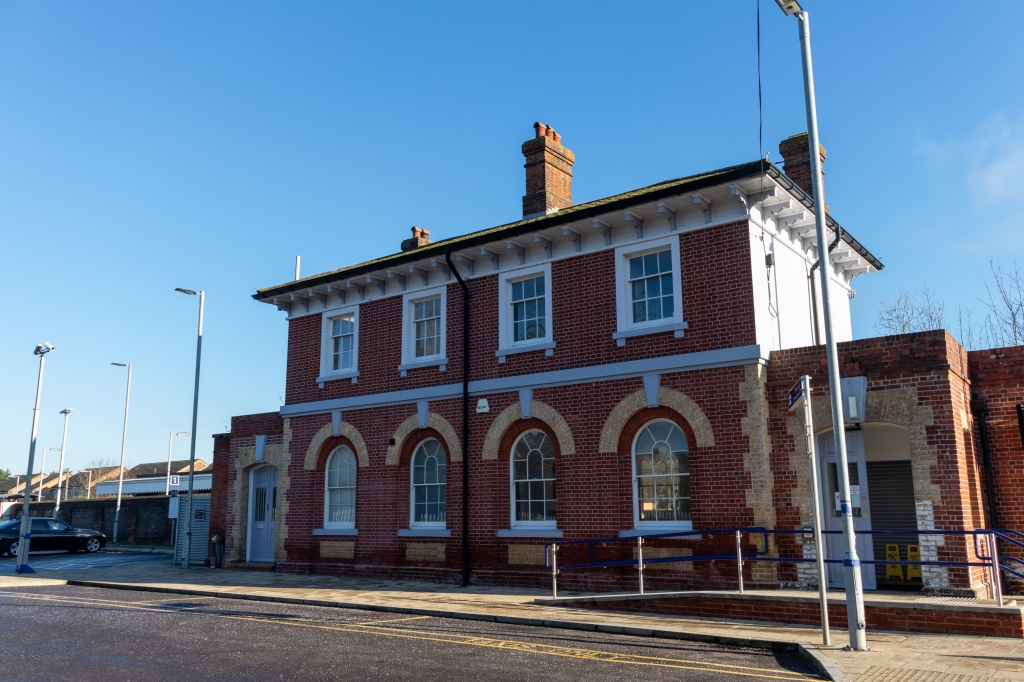
Goods facilities were positioned on the Maidstone bound side, and consisted of the aforementioned goods shed. A siding was also provided on the Strood bound side, it terminated just behind the platform.
The signal box next to the level crossing appeared in 1892, and the footbridge was built two years later. A familiar clapboard design for the signal box was chosen, and an extension to this can be seen, which was completed in the 1930’s.
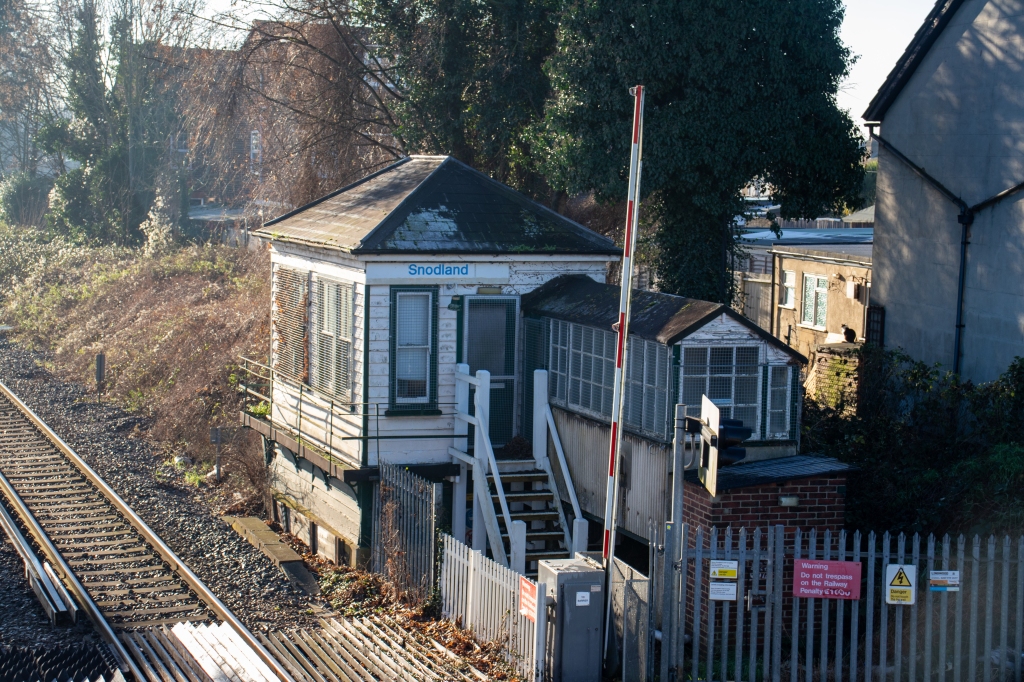
This arrangement continued until the 1960’s, when the goods facilities closed, however the shed was not demolished until the 1980’s, with only the retaining wall being kept utilising that opulent Maidstone side canopy. There is nothing left of the sidings in the present day.
The station and building has been well looked after since 2010, and this included upgrade works on the footbridge in 2020, and this is also when the snodland mural appeared on platform one.
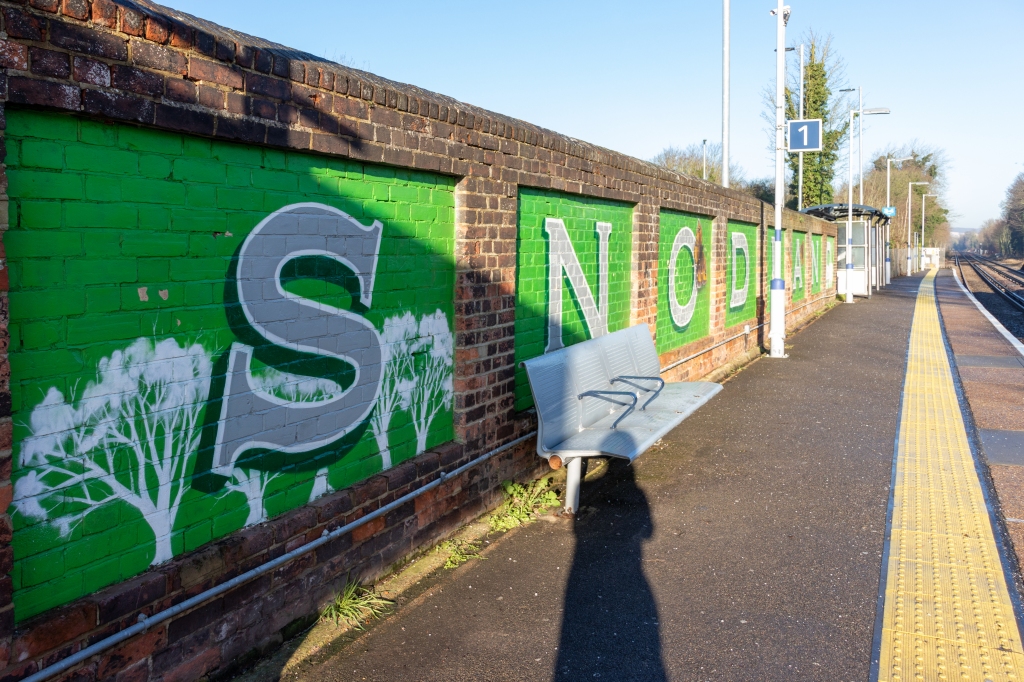
The Kent Community Rail Partnership are active along the whole line, and at this station the Sunflower Mural was installed in January 2022, which aims to help raise awareness of hidden disabilities and that everyone is different. This was part of a community lead station improvement by the students of Five Acre Wood.

At time of writing, the majority of services are provided by Class 375 electric multiple units. However, two Class 395 Javelin electric multiple units run to St Pancras in the morning, with two returning services in the early evening.
Snodland is a great station on the line. Most of the original fabric is still here, which is great to see. Not only that, but with recent refurbishments and the murals which have been installed, it is also a very pleasant place to catch a train. For the enthusiast, it has good sight lines, and normally a few freight trains a day. I highly recommend a visit.
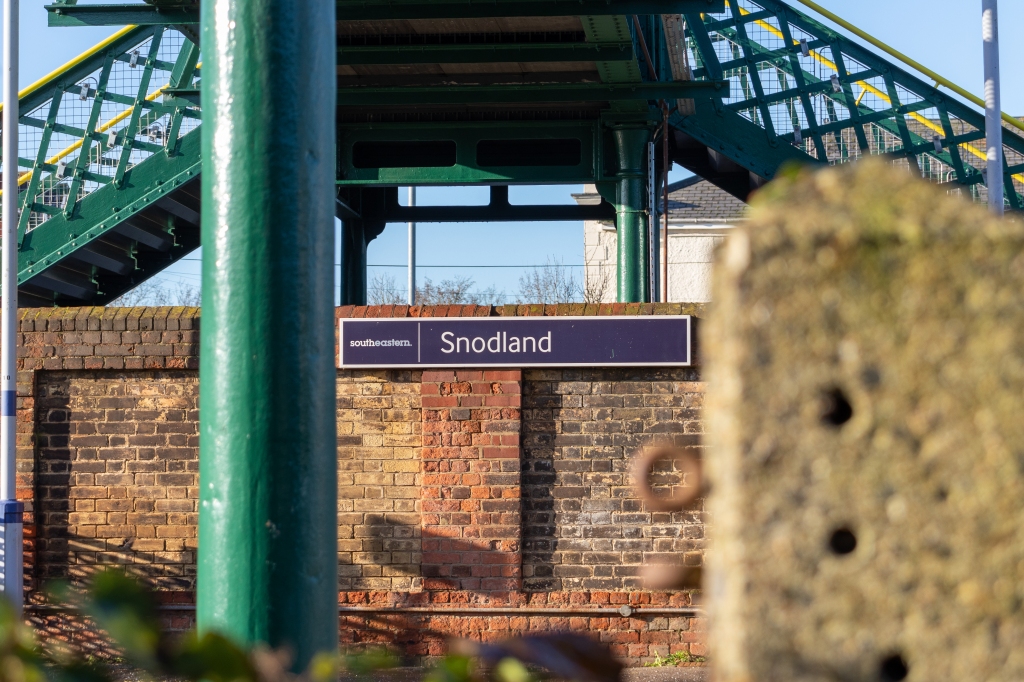
A video of Snodland railway station is to be seen below.
Click for the Kent Community Rail Partnership

